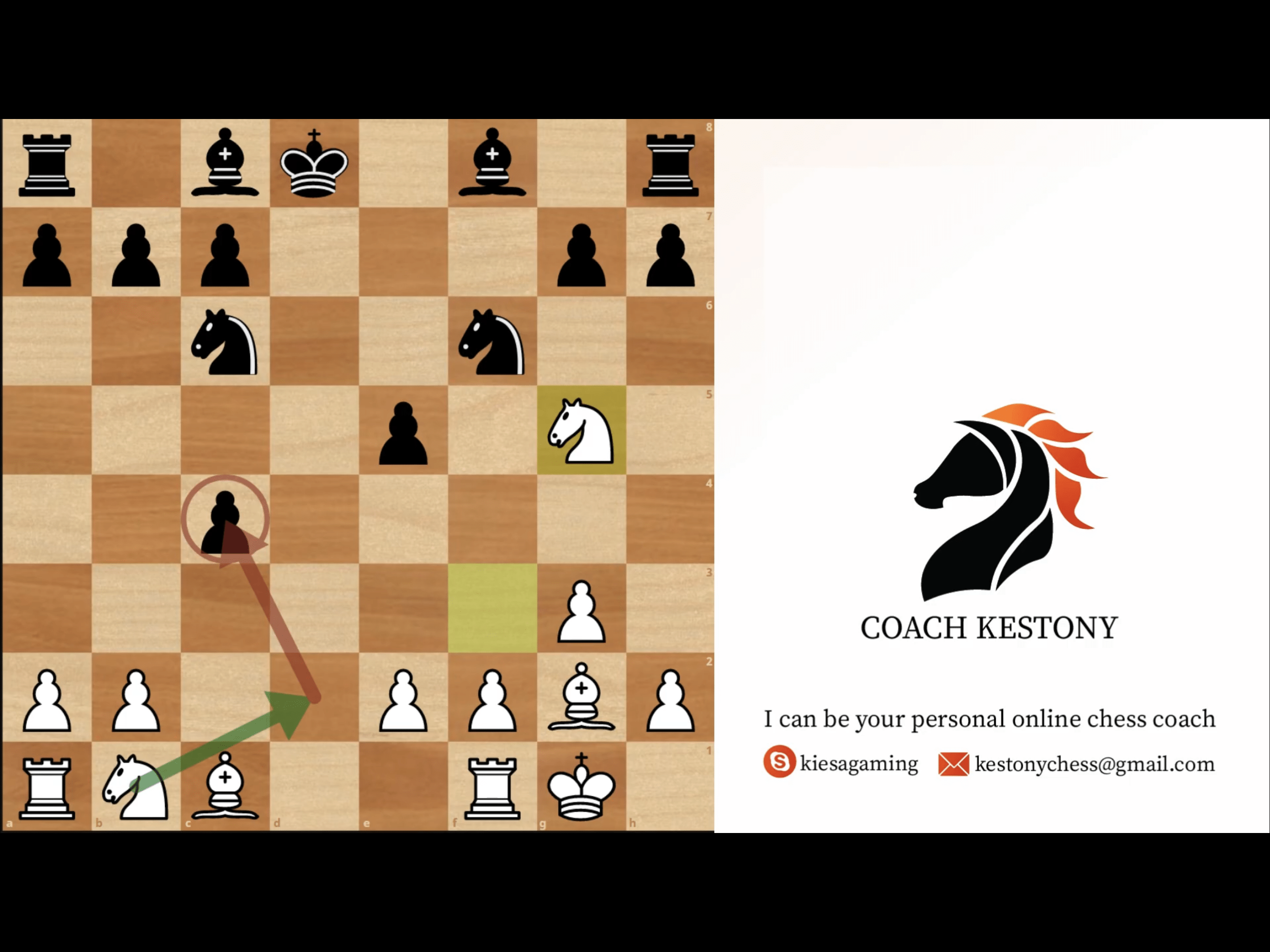wonderful, this is standard for you coach.
Best Opening For Beginner

Great video. Found it very helpful.
Coach - I have a follow up question for you.

For the next move. Would it be Ok if the Bishop took the Knight on C6, thus tripling up pawns on the C file? I see the fork with the Knight taking the Rook on H8. But, if that wasn’t the case, should I switch the Bishop for a Knight when I get a chance to double or triple up pawns as a general rule of thumb so to speak?

@ScottNoCa You are welcome! I think that if black plays Ke8 there, I would prefer Nd2-Nc4 ideas, but Bxc6 is something that you can definitely consider. It depends on once taste, some say that the bishop on g2 is too good to be exchanged, others say that what matters is what stays on the board, not what goes off. In general, doubling up opponent's pawns when they remain doubled is one of the reasons why masters give up the good bishop for a knight, but a lot of the times there are stronger alternatives as well ![]()

Like to start with Nf3 first; it's how I learned to play. Can move d4 next or g3. As a beginner I found beginner opponents were very unfamiliar with Nf3 - being more familiar with e4 then d4.
But great video explaining opening theory/thinking.

Spoiler: they like the London System (d4 first move) and the Evan´s Gambit (e4 first move) as white. They like the King´s Indian (d4 response) and the Caro Kann (e4 response) for black.

@Kestony - a very thorough introduction of a very sound opening. I agree many a novice could use it effectively as they learn. However, I would caution that the English Defense is an effective anti-system for the opening you've shown here:
At this point, e4 and d4 are both very weak for white, the f3 knight is effectively pinned (it can move to h4 or e1, but the resulting exchange of bishops on g2 loses tempo), and all of black's pieces have been mobilized. Black also has a budding attack against white's castled king.
Granted the beginner will see very little of the English Defense in the early going, but it's something to be wary of as they advance into the ranks of amateurs.
Particularly, after 1. d4 e6 2. Nf3 b6! all but forces the fianchetto under unfavorable circumstances. White can try to avoid this and still reach the desired setup, but only by changing the move order - 1. d4 e6 2. g3, when 2. ..b6 3. Bg2! forces black to weaken his pawns with either c6 or d5. Even then, after 1. d4 e6 2. g3, Black can transpose into a favorable variation of the Benoni with 2. ..c5.
There's an effective anti-system for every system (Lasker proved that much), simply because every opening has a premise which can be undermined by specific counterplay. However, in this case, the anti-system requires a lot of hypermodern theory to master, and thus won't be encountered by a novice anytime soon.
Still, very good instructional video, and I agree that the opening is an excellent starting point for beginners as they learn tactics and positional theory.

Hello! I have no idea where to ask this. I work in a Hall of residence and am organising a tournament for my residents.
Will they be able to see who wins, who loses, who is in there?
We have a club at the moment and I am expecting them to use. This is my first time using this website.

ffs, they don't need to learn openings, they need to learn not to blunder pieces. a game between 2 600s is decided by who blunders the most.

I'm stuck with 1 opening and i have to focus on more openings
You need to focus on everything, except openings. Openings don't matter at all. Only big blunders matter.
This is your last game, which you won. On move 15, you were up a piece, tons of time on the clock, and you simply blundered your queen with 15. Qg4.
This opponent did not notice it, but the next one will.




Hello friends, today I would like share, in my opinion, best opening for beginners for the white color to achieve all opening goals with ease: control the center, develop the pieces and castle.
Link to the video: https://youtu.be/vzAZYyydYe8